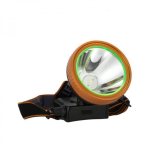Actuators, which are motorized mechanisms, facilitate drawers’ automatic opening and closing, especially in situations where a hands-free operation is needed. Actuators pave the way to convenience. This article will offer valuable insight into maintaining a key component in your automated drawer: the linear actuator.
Three Types of Actuators
The three main types of actuators include electric, pneumatic, and hydraulic. Here’s what you need to know about the main types of actuators:
- Electric Linear Actuators: These actuators employ an electric motor to enable the movement of the drawer. Smart homes and furniture applications frequently employ them. Electric actuators are powered by an electric motor that converts electrical energy into mechanical motion, allowing for the smooth operation of a drawer. They are frequently employed in modern, automated environments such as smart homes and specialized furniture due to their precise control, efficient operation, and compatibility with electronic control systems.
- Pneumatic Actuators: Compressed air enables these actuators to generate force, thus facilitating drawers’ controlled and fluid movement.
- Hydraulic Systems: Vital in numerous industries, they require reliable and precisely tailored components to meet diverse operational needs. Critical elements like hydraulic actuators and valves are central to these systems. Hydraulic actuators, employing fluid pressure, provide exact and potent movements essential for tasks demanding significant force. Meanwhile, valves are indispensable for managing liquid flow and pressure, illustrating the sophistication of these systems.
This diversity underscores the importance of selecting a trusted supplier, mainly for custom-made components like hydraulic hoses, which are crafted to address the unique requirements of each product. These custom made hydraulic hoses highlight the critical need for precision and quality, as each hydraulic system has distinct specifications. The role of high-quality seals and filters is also paramount, ensuring the integrity and cleanliness of the hydraulic fluid. Using substandard components can compromise efficiency and safety, underscoring the imperative for components that are expertly designed to meet the specific needs of each unique application.
Features and Considerations
When choosing an actuator for automated drawers, consider speed, force, noise levels, and power requirements. Furthermore, scrutinize attributes like position feedback, anti-pinch protection, and compatibility with control systems for improved functionality.
Creating Functional and Aesthetically Pleasing Drawers
Now that we have explored the components involved in drawer operation, it’s important to consider additional factors to ensure functional and visually appealing drawers:
1. Material Selection
Consider selecting drawer slides and actuators from premium materials like stainless steel or durable polymers. This will establish lastingness and fortitude against wear and tear.
2. Installation and Maintenance
Properly installing drawer slides and actuators necessitate following the prescribed guidelines from the manufacturer. Their efficient functioning can be preserved over time by regularly maintaining them through cleaning and applying lubricant.
3. Safety Considerations
Prioritize safety by selecting slides and actuators that incorporate features like soft-close mechanisms, preventing accidental slamming and reducing the risk of injury.
Understanding the Automated Drawer
It is vital to comprehend the fundamentals of drawers, top drawer slides, and actuator properties to succeed in furniture design, construction, or maintenance endeavors. Considering the advantages of actuators for automated drawers empowers you to enhance your knowledge and make informed choices regarding their implementation.
Select the Right Drawer
Make sure to select drawer slides that match your weight capacity specifications and extension requirements. When considering actuators, selecting the appropriate type based on your application needs is vital while also giving prominence to features that improve convenience and safety. By following appropriate installation methods and engaging in consistent maintenance; you can secure the longevity and efficient performance of your drawers. Additionally, prioritize safety by selecting slides and actuators with features like soft-close mechanisms.
Seek More Information on Atomated Drawers
When seeking more information and guidance about drawer slides, actuators, and related subjects, opt for credible sources such as industry-leading manufacturers, government bodies, or educational institutes. These sources contain valuable knowledge and further explanations that can support your comprehension.
Bottom Line
Actuators play a pivotal role in transforming our living and working spaces into automated, efficient, and safe environments. Whether it’s electric, pneumatic, or hydraulic, the right type of actuator, when chosen with careful consideration of specific needs and features, can provide an optimal automated drawer experience. The materials chosen, correct installation, and routine maintenance also contribute significantly to the durability and performance of these systems.
Always remember to rely on credible sources for further information and guidance, as they can offer expert advice and comprehensive explanations to enhance your understanding and application of these essential tools in modern living.
Safety should never be compromised, hence features like soft-close mechanisms are essential. By broadening your knowledge and making informed decisions, you can fully harness the advantages of these technologies to create aesthetically pleasing, safe, and functional automated drawers.














